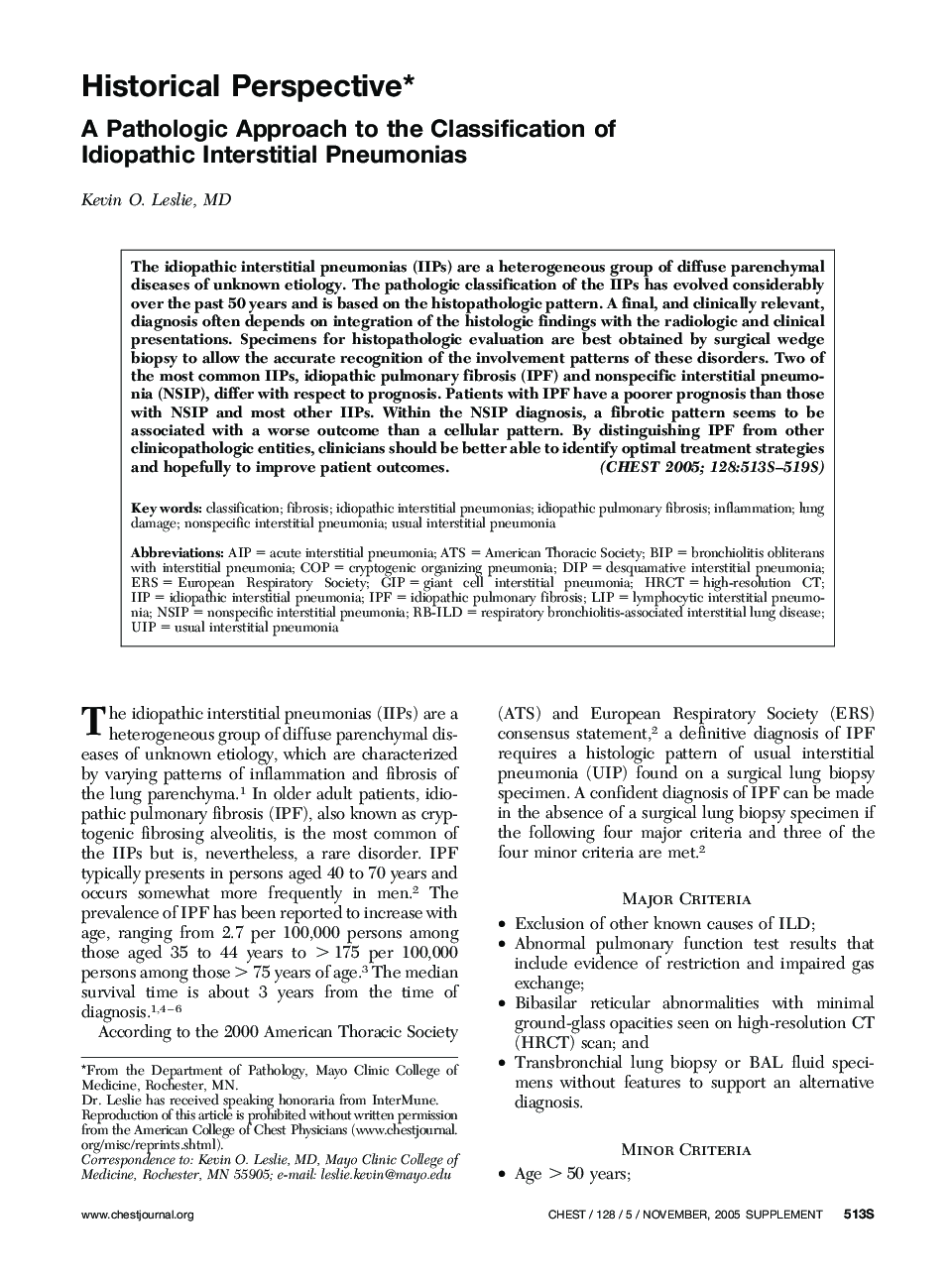| Article ID | Journal | Published Year | Pages | File Type |
|---|---|---|---|---|
| 9161220 | Chest | 2005 | 7 Pages |
Abstract
The idiopathic interstitial pneumonias (IIPs) are a heterogeneous group of diffuse parenchymal diseases of unknown etiology. The pathologic classification of the IIPs has evolved considerably over the past 50 years and is based on the histopathologic pattern. A final, and clinically relevant, diagnosis often depends on integration of the histologic findings with the radiologic and clinical presentations. Specimens for histopathologic evaluation are best obtained by surgical wedge biopsy to allow the accurate recognition of the involvement patterns of these disorders. Two of the most common IIPs, idiopathic pulmonary fibrosis (IPF) and nonspecific interstitial pneumonia (NSIP), differ with respect to prognosis. Patients with IPF have a poorer prognosis than those with NSIP and most other IIPs. Within the NSIP diagnosis, a fibrotic pattern seems to be associated with a worse outcome than a cellular pattern. By distinguishing IPF from other clinicopathologic entities, clinicians should be better able to identify optimal treatment strategies and hopefully to improve patient outcomes.
Keywords
HRCTrespiratory bronchiolitis-associated interstitial lung diseaseRB-ILDIIPUIPNSIPAIPATSGIPDIPLIPCOPIPFERSBiPhigh-resolution CTLung damageinflammationEuropean Respiratory SocietyAmerican Thoracic SocietyClassificationidiopathic pulmonary fibrosisFibrosisIdiopathic interstitial pneumoniaacute interstitial pneumoniaLymphocytic interstitial pneumoniaUsual interstitial pneumoniaDesquamative interstitial pneumoniaCryptogenic organizing pneumoniaNonspecific interstitial pneumoniaIdiopathic interstitial pneumonias
Related Topics
Health Sciences
Medicine and Dentistry
Cardiology and Cardiovascular Medicine
Authors
Leslie MD,
